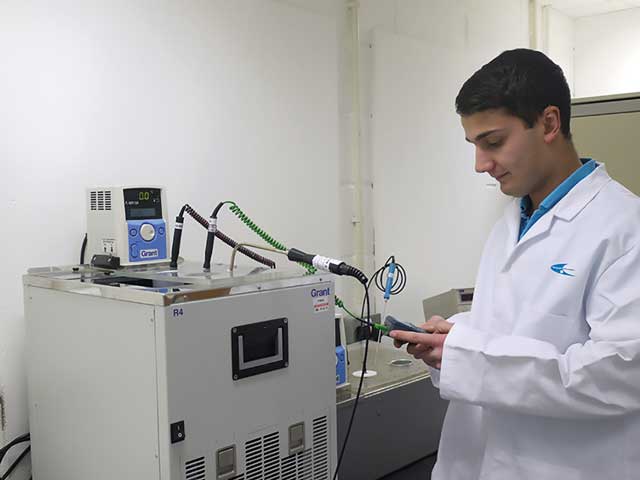
Calibration is vital wherever measurements are important, giving users and businesses confidence in the results that they monitor, record and control, says Rick Petford of Tempcon Instrumentation.
Calibration is the process of comparing a reading on one piece of equipment or system with another piece of equipment that has been referenced to a known set of parameters. The equipment used as a reference should itself be directly traceable to equipment that is calibrated according to ISO/IEC 17025.
This is the international standard for the accreditation of testing and calibration laboratories. It includes quality management system requirements along with technical requirements. In the UK, ISO/IEC 17025 accreditation is provided by UKAS. So, often, calibration performed by an ISO/IEC 17025 accredited laboratory is referred to as “UKAS calibration”.
How temperature calibration is carried out
In general use, calibration is often regarded as including the process of adjusting the output or indication on a measurement instrument to agree with the value of the applied standard, within a specified accuracy. However, this is actually two processes: calibration and adjustment. It is important therefore to understand exactly what service you require. It is also important to understand what is being calibrated and how the calibration is being performed.
As an example, consider a digital thermometer that uses an external temperature probe. Many people are surprised to learn that their calibration is performed using a simulated temperature value that is applied to the thermometer only. A test instrument is attached to the digital thermometer and a voltage equivalent to a specific temperature is applied to the digital thermometer. The result is recorded, and the thermometer is then considered to be calibrated.
Many users require, and probably expect, a more rigorous calibration to be performed that reflects real-world use. Here, the preferred method is to test both the digital thermometer and the temperature probe together (in other words a “system test”) and to use a real heat source. The value displayed by the system being tested is then compared against the standard (the system with a known or assigned accuracy as described above).
The importance of calibration
Calibration defines the accuracy and quality of measurements recorded using a piece of equipment. Over time there is a tendency for results and accuracy to drift, particularly when using particular technologies or measuring particular parameters such as temperature and humidity. To be confident in the results being measured, there is a continuing need to maintain the calibration of equipment throughout its life for reliable, accurate and repeatable measurements.
The goal of calibration is to minimise any measurement uncertainty by ensuring the accuracy of test equipment. Calibration quantifies and controls errors or uncertainties in measurement processes to an acceptable level.
In catering, or commercial kitchens, the implications of using a piece of equipment that has not been calibrated could be that a critical food temperature is incorrectly measured; this could result in:
- a food safety issue
- a breach of HACCP and customers being ill
- a notice of closure from an Environmental Health Office
- legal action
In manufacturing process applications, any equipment used should be calibrated at multiple points across its working range to provide reliable information to critical alarms and systems, at the very least to maintain consistent product quality. Failure to calibrate, or improper calibration, has been the cause of injury, death and even major environmental disasters.
When to calibrate
When considering how often to undertake calibration, think of the cost of calibration as an investment and the potential results of an incorrect reading as the cost of not making the investment. What level of precision is required, and why? How heavily is the measuring equipment used?
For most industries, the standard is to calibrate annually. As you gain results from calibration tests, you will be in a position to adjust the frequency of calibrations, or upgrade to more robust measuring instruments if needed. Most calibration laboratories supply a printed calibration certificate for the customer to retain as proof of quality standards.
In summary, calibration is vitally important wherever measurements are important: it gives users and businesses confidence in the results that they monitor, record and subsequently control.
Tempcon provides competitively priced, comprehensive in-house thermometer and probe calibration services, using UKAS traceable calibration equipment. UKAS calibration is also available.
More information: +44 (0)1243 558270
or email: info@tempcon.co.uk | www.tempcon.co.uk

